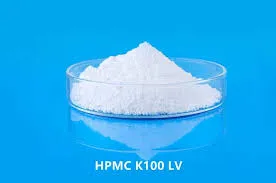
Aug . 04, 2024 03:10 Back to list
Understanding the Thickening Mechanism of Hydroxyethyl Cellulose in Various Applications and Formulations
The Thickening Mechanism of Hydroxyethyl Cellulose
Hydroxyethyl cellulose (HEC) is a non-ionic, water-soluble polymer derived from cellulose, an abundant natural polymer found in plant cell walls. Due to its unique properties, HEC is widely used in various industries, including food, pharmaceuticals, cosmetics, and construction. Its ability to function as a thickening agent plays a significant role in formulating products with desirable viscosities, enhancing performance and stability.
The thickening mechanism of HEC primarily involves its molecular structure and the interactions it has with water. HEC is a modified cellulose polymer, where hydroxyethyl groups are introduced to the cellulose backbone. This modification increases the solubility of cellulose in water and allows HEC to form hydrogen bonds with water molecules. As HEC dissolves in water, it undergoes hydration and respects its molecular weight, which is critical for its thickening properties.
When HEC is added to water, its long polymer chains begin to interact with the water, creating a thickening effect. The chains of HEC become entangled and form a semi-solid network in the water phase. This network disrupts the flow of the liquid, resulting in increased viscosity. The thickening is primarily a result of the physical entanglement of the polymer chains rather than any chemical reaction, which differentiates HEC from many other thickening agents that may rely on gelling or coagulating processes.
hydroxyethyl cellulose thickening mechanism

The degree of thickening produced by HEC can be influenced by several factors, including concentration, temperature, and pH of the solution. Higher concentrations of HEC lead to greater viscosity as more polymer chains are present to interact and entangle in the solution. Additionally, temperature can impact the solubility and viscosity of HEC; as the temperature increases, the kinetic energy of the water molecules also increases, which can sometimes lead to decreased viscosity. This temperature sensitivity is particularly important in applications where thermal processing is involved.
pH levels can also affect the solubility and performance of HEC. While HEC is stable across a wide pH range, extreme levels can lead to hydrolysis of the polymer structure, decreasing its thickening efficiency. Therefore, understanding the pH of the final product is essential for formulators utilizing HEC to ensure optimal viscosity and stability.
Moreover, HEC's thickening properties can exhibit shear-thinning behavior, which is highly advantageous in formulations. In shear-thinning systems, viscosity decreases under applied stress or shear; thus, products can be easily applied while maintaining stable viscosity during storage. This attribute is beneficial in various fields, particularly in paints and coatings, where easy application and uniformity are crucial.
In conclusion, the thickening mechanism of hydroxyethyl cellulose is a complex interplay of its molecular structure, hydration, and interactions with water. Its ability to provide stable viscosity under varying conditions makes it a versatile ingredient across multiple industries. By understanding the intricacies of HEC’s thickening behavior, formulators can leverage its properties to create effective and consumer-friendly products that meet specific performance criteria. As research continues to explore innovative applications, HEC remains a significant player in the realm of thickening agents, contributing to the formulation of high-quality products that enhance user experience.
-
Versatile Hpmc Uses in Different Industries
NewsJun.19,2025
-
Redispersible Powder's Role in Enhancing Durability of Construction Products
NewsJun.19,2025
-
Hydroxyethyl Cellulose Applications Driving Green Industrial Processes
NewsJun.19,2025
-
Exploring Different Redispersible Polymer Powder
NewsJun.19,2025
-
Choosing the Right Mortar Bonding Agent
NewsJun.19,2025
-
Applications and Significance of China Hpmc in Modern Industries
NewsJun.19,2025







